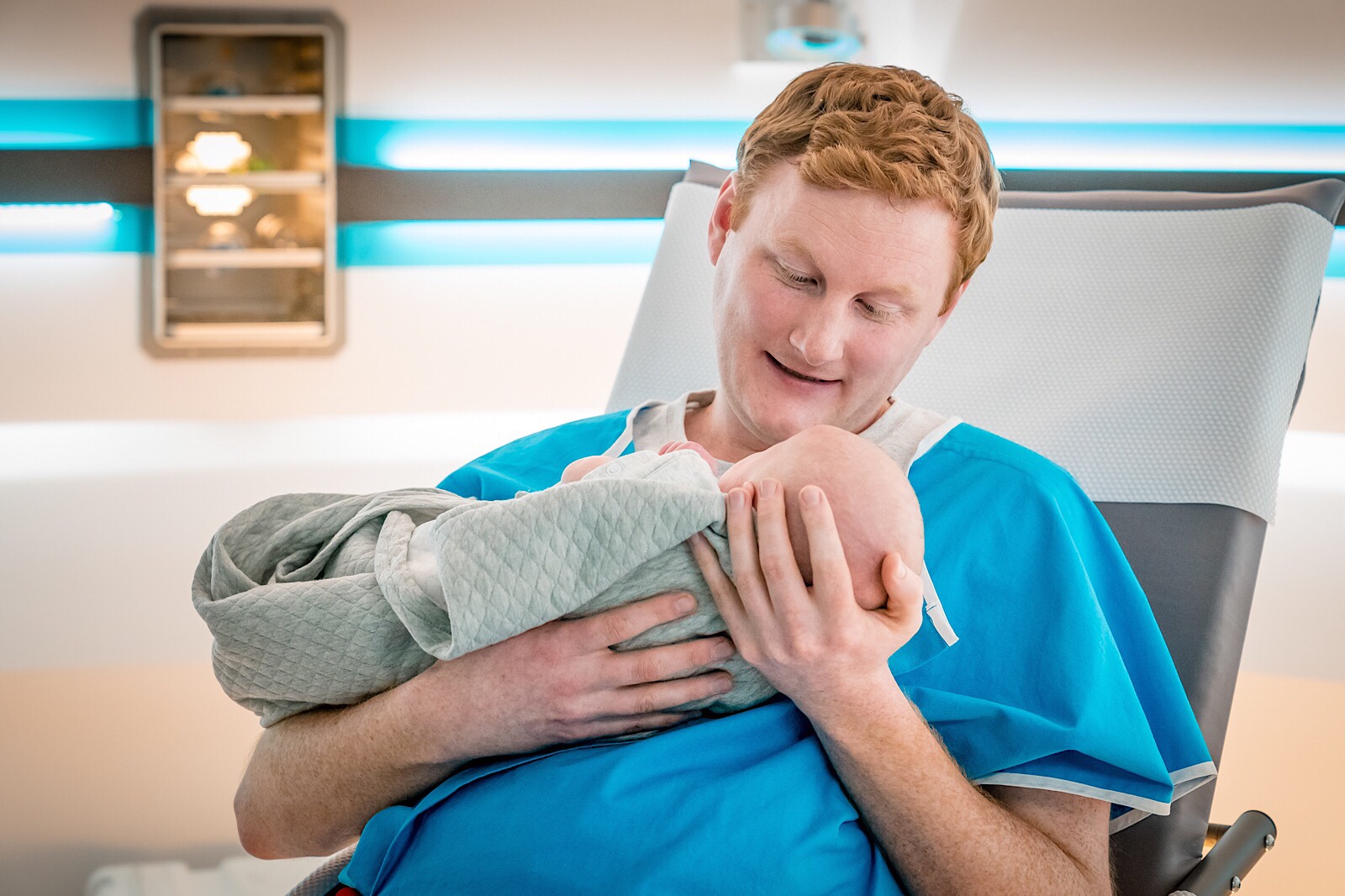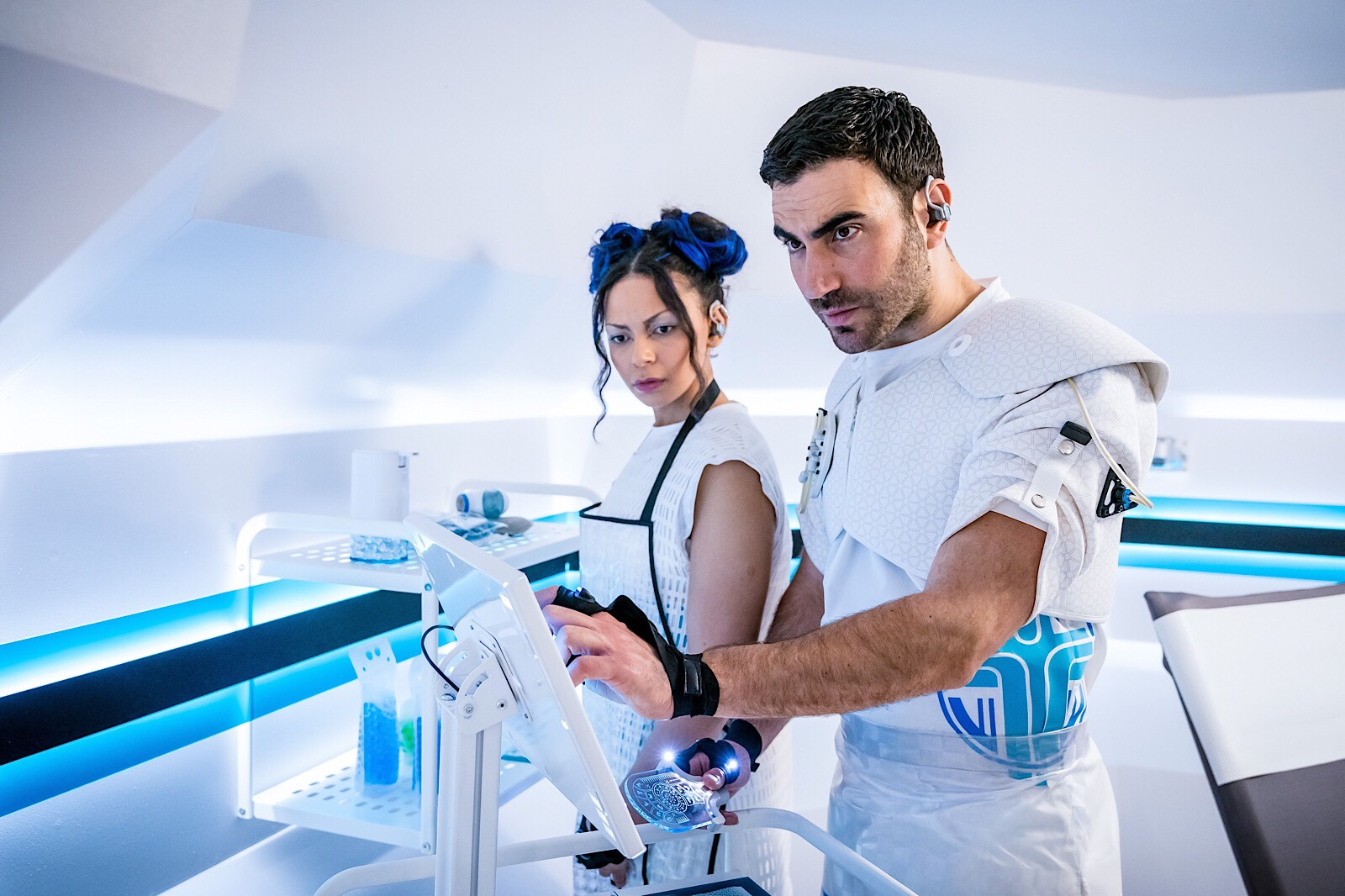WARNING – SPOILERS AHEAD…
Reviewed by Tim Robins
 Doctor Who: The Tsuranga Conundrum. Image: BBC/BBC Studios
Doctor Who: The Tsuranga Conundrum. Image: BBC/BBC Studios
First UK Broadcast: Sunday 4th November 2018
Writer: Chris Chibnall
Director: Jennifer Perrott
Guest Starring: Suzanne Packer, Ben Bailey Smith, Brett Goldstein and Lois Chimimba
“Risk to life: absolute.” Injured and stranded in the wilds of a far-flung galaxy, The Doctor, Yaz, Graham and Ryan must band together with a group of strangers to survive against one of the universe’s most deadly — and unusual — creatures…
As tempting as it is to use the fifth episode of the new Doctor Who as a useful opportunity to produce a half term report, The Tsuranga Conundrum better serves as a general statement of intent by show runner Chris Chibnall in that it seemed to embody everything that he is trying to do with the series.
The set up was this: the Doctor and friends are consigned to a medical facility after falling victim to a sonic mine. The facility contains a diverse cast of characters, including a pregnant man, a war hero with a fatal illness and her clone android.
(I just want to say now that I have no idea what a clone android is, other than I was apparently looking at one).
The trapped Doctor must do a range of stuff, including neutralising a monster that has infiltrated the facility and threatens to destroy them all by eating parts of its surroundings.
Fan critics have pointed obvious references to Alien: for example, a monster creeping around the ship, an android crew member and a feisty woman who gets into some cybernetic armour to try and save the day. Some have then gone on to berate the episode for not living up to expectations.
But let’s get real for a moment. Alien was an 18 rated horror story with one or two infamously gory scenes, so the idea that Chibnall would be serving up hot fountains of blood and a scene such as the one where a crewman having his face caved in was a stone cold non starter. Rather, the monster turned out to be a cross between a Kosla bear having a bad hair day and ‘Stitch’ (the apparently fearsome but rather cute alien in Disney’s Lilo and Stitch).
 The destructive Pting from The Tsuranga Conundrum. Image: BBC/BBC Studios
The destructive Pting from The Tsuranga Conundrum. Image: BBC/BBC Studios
The gag is a tried and tested one, a kind of embodiment of passive-aggression exemplified by Fizz-Gig in The Dark Crystal, the Gremlins and Beep the Meep from an early Doctor Who Weekly strip.
The Pting, for that is what the Tsuranga Conundrum’s monster was named, got bigged-up as a menace from which few if any survive meeting. But it rapidly gets stunned, then kicked into touch by Yaz. Instead of being excited, my thoughts became lost in a fog of bathetic humour. All I can say to recommend it is that a Pting will make a lovely plush toy for girls to cuddle at Christmas.
It is also worth pointing out that the Doctor Who story The Ark In Space preceded Alien, so should claim prior honours when it comes to SF comparisons. Some critics have acknowledged this but, as good as Tom Baker’s story was, references to Doctor Who’s past seem to have a soothing function a bit like Peanuts character Linus grabbing his comfort blanket.
There’s no doubt the nerves of fans certainly require soothing as I think they (and I) are coming to realise what they are watching is Doctor Who – but not Doctor Who as we have known it. This is based on a gut feeling that, no matter what age I have watched it, I have never felt patronised by the programme. But I did last week and I did this too, as frankly feeble SF ideas are presented alongside talk of real world physics that made the Doctor seem little more knowledgeable than a Discovery Channel documentary on five amazing things we can do with particle accelerators.
This new season of Doctor Who is as different a take on the show as the first season with Jon Pertwee was to the first ever season starring William Hartnell. So, despite superficial similarities to The Ark in Space or any other SF film of that ilk, The Tsuranga Conundrum was not really a story about a monster on the loose or a ‘base under siege’.
What it was, at heart, was an or a kind of cross between an escape room and an evangelical revival at which every threat is an opportunity for a show of all round, feel-good, positivity. Each moment of danger was followed by big grins and heartfelt exhortations to get in touch with one’s basic confidence and achieve the seeming impossible by will alone.
In keeping with this, dialogue was of a “You can do it! Believe in yourself!” and “You can achieve anything that you want to achieve!” variety. It was a bit like watching the presenters on the BBC’s Breakfast Time, during which the presenters show us ghastly things that have happened to everyday people only to exclaim “What we really love is your positivity” or “Given you have lost all your limbs to a flesh eating bug, you certainly still have an enthusiasm for life!”.
Could Doctor Who be being used to peruse the BBC’s bizarre agenda to balance negative stories with really positive ones, or at least to put a positive spin on the world?
As Doctor Who is now all about the feelings, the central tension was not the Pting, but the emotional insecurities of a guy who was pregnant and about to give birth. You could tell that a miscarriage or some kind of other birth relate incident was the real threat because Segun Akinola’s relentless background beats, that, admittedly, added a lot to the edge of the seat quality to the story, continued counting down after the monster was disposed of and right up to the moment the pregnant man successfully gave birth.

Image: BBC/BBC Studios
As far as supporting cast go, the show was also all about the male grooming. There was an intended moment of horror, when one of the characters found himself jettisoned in a faulty life raft. But the moment of sacrifice failed to have much impact, partly because he had all the personality of a puppet from Gerry Anderson’s Captain Scarlet and the immaculate stubble to match.

Image: BBC/BBC Studios
There is also a whole set of issues here about how, having made The Doctor a woman, her character is interpreted. One approach would have made her into a kick-ass Bitch Queen of Outer Space, a kind of Sigourney Weaver’s Ripley. But that tends to play into men’s fantasies that the best female protagonist can be just as violent as a man, with the added bonus that they take their clothes off to, for instance, take a shower. It is great that Doctor Who is trying a different route. Of course, the Doctor is not that kind of protagonist – if he/she is a protagonist at all. But Whittaker’s Doctor is being feminised in some unintentionally negative ways including, in this episode, being more easily injured than her friends and spending a lot of the time clutching her stomach.
Was this in sympathy with the pregnant man? Not according to the script, but it was, in any case a weird piece of mirroring. In terms of gender display, visually, Whittaker’s injured hobbling kept signalling weakness and even subordination to the characters around her.
Whittaker has a fun way of back-chatting those who underestimate her and teasing her friends. She also, has some amusing facial expressions that also suggest an enjoyable take on everyone’s favourite Time Lord. However, the Doctor also seems to have been radically dumbed down.
For example, I never imagined that the Doctor would ever say “all the planets look the same; it’s hard to keep track!” and appear to actually mean it. It is a good thing that the Doctor is not an irritating know-it-all, but her curiosity is coming to suggest that her head is in some perpetual whirl. The Doctor’s wide-eyed curiosity about everything, including herself, all too easily blurs into a character who has been divested of power and even personal history.
Of course, the Doctor can be anything, a woman for instance. But a bit of a know-nothing shouldn’t be an option.
Tymbus
A freelance journalist and Doctor Who fanzine editor since 1978, Tim Robins has written on comics, films, books and TV programmes for a wide range of publications including Starburst, Interzone, Primetime and TV Guide. His brief flirtation with comics includes ghost inking a 2000AD strip and co-writing a Doctor Who strip. He reviewed comics and films in posts and podcasts for the Mindless Ones until he became a net diva and forgot to name check the rest of the team at a San Diego Comic Con panel. The Mindless Ones gave him the nickname ‘Tymbus’
WEB LINKS
[amazon_link asins=’B07DVWFG2N,B07FFQCNBB,1785943774,B07FFDXFZF’ template=’ProductCarousel’ store=’downthetubes’ marketplace=’UK’ link_id=’075c3c83-e8b5-11e8-87c8-178a0c805593′]
A freelance journalist and Doctor Who fanzine editor since 1978, Tim Robins has written on comics, films, books and TV programmes for a wide range of publications including Starburst, Interzone, Primetime and TV Guide.
His brief flirtation with comics includes ghost inking a 2000AD strip and co-writing a Doctor Who strip with Mike Collins. Since 1990 he worked at the University of Glamorgan where he was a Senior Lecturer in Cultural and Media Studies and the social sciences. Academically, he has published on the animation industry in Wales and approaches to social memory. He claims to be a card carrying member of the Politically Correct, a secret cadre bent on ruling the entire world and all human thought.
Categories: Doctor Who, downthetubes News, Other Worlds, Reviews
 In Review: Doctor Who – The Legend of Ruby Sunday/ The Empire of Death
In Review: Doctor Who – The Legend of Ruby Sunday/ The Empire of Death  In Review: Timeslides: The Doctor Who Artwork of Colin Howard
In Review: Timeslides: The Doctor Who Artwork of Colin Howard  In Review: The Illustrated Journey: A Visual Celebration of Doctor Who
In Review: The Illustrated Journey: A Visual Celebration of Doctor Who  Doctor Who: Worlds of Wonder Exhibition
Doctor Who: Worlds of Wonder Exhibition
“You could tell that a miscarriage or some kind of other birth relate incident was the real threat”
There what? I never felt like there was a chance something might go wrong there.